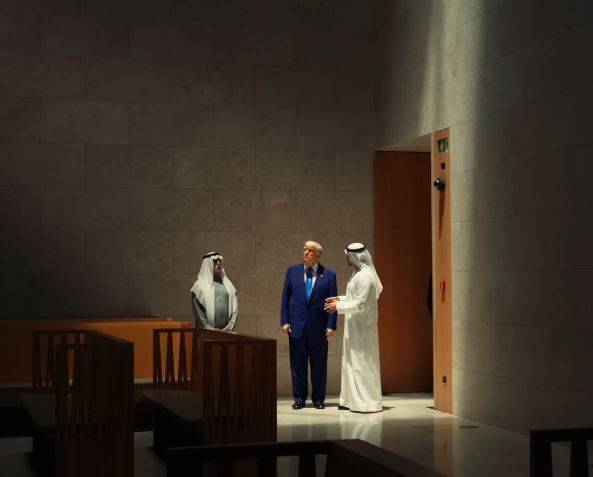Massive Investment Deals and Strategic Alliances
In a landmark announcement, President Donald J. Trump secured a $600 billion investment deal with Saudi Arabia, targeting critical sectors such as defense, AI infrastructure, autonomous vehicles, and partnerships with tech giants like Google, Oracle, and AMD. This deal is widely seen as the dawn of a “Petro Dollar 2.0” era, where Middle Eastern wealth is directly powering the next generation of American technological advancement.
The momentum didn’t stop there. Qatar pledged $1.2 trillion, including a historic order for Boeing aircraft, while the UAE committed $1.4 trillion over the next decade, primarily focusing on energy and defense. Collectively, these agreements total over $3 trillion, signaling a strategic economic realignment that prioritizes peace, stability, and commerce over conflict.
Crypto: A New Frontier in U.S.-Middle East Collaboration
A particularly notable aspect of these negotiations is the integration of cryptocurrency into high-level investment arrangements. In a groundbreaking move, a state-backed Emirati firm (MGX) agreed to use the Trump-affiliated World Liberty Financial stablecoin (USD1) as part of a $2 billion investment deal involving the global crypto exchange Binance. This agreement, announced at a major Dubai conference and involving Trump family members and business partners, marks one of the largest and most high-profile crypto deals linking Middle Eastern capital directly to U.S. interests.
While the broader investment agreements focus on sectors like AI and infrastructure, the crypto partnership stands out as a symbol of how digital assets are becoming an integral part of international finance. The deal underscores the growing legitimacy and mainstream adoption of cryptocurrencies, not just as speculative assets but as vehicles for large-scale, cross-border investment.
Geopolitical Stability and Market Confidence
These investment breakthroughs have been accompanied by significant diplomatic achievements. The U.S. played a key role in brokering a ceasefire between nuclear-armed India and Pakistan, averting a potential crisis and reinforcing the importance of economic cooperation over military confrontation. Meanwhile, a surprise tariff reduction agreement between the U.S. and China—from 145% to 30%—has reignited optimism in global markets, sparking rallies in the S&P 500, Dow Jones, and Nasdaq indices.
The Mainstreaming of Crypto and AI
In another milestone, Coinbase, one of the world’s leading cryptocurrency exchanges, was added to the S&P 500 index. This move is a clear signal that crypto has entered the financial mainstream, with Bitcoin surging above $100,000 and institutional investors increasingly viewing digital assets as a core component of diversified portfolios.
Simultaneously, the U.S. and UAE have agreed on a pivotal partnership allowing the UAE to purchase some of the world’s most advanced AI semiconductors from American companies. This deal is poised to generate billions in business and accelerate the UAE’s ambitions to become a global leader in artificial intelligence.
What This Means for Investors
The convergence of massive Middle Eastern capital inflows, diplomatic breakthroughs, and the integration of crypto and AI into global markets signals the start of a new era. For investors, this means:
-
- Robust growth potential in U.S. equities, particularly in sectors benefiting from foreign investments and technology partnerships.
-
- Increased legitimacy and adoption of cryptocurrencies as both investment vehicles and tools for international finance.
-
- Major opportunities in AI and semiconductor industries, fueled by international cooperation and capital.
-
- A more stable and predictable global economic environment, encouraging investor confidence and risk-taking.
Conclusion: A Strategic Realignment for the Next Decade
The fusion of historic investment deals, peace initiatives, crypto integration, and technological cooperation is ushering in a new financial era. This is more than just a story of capital flows—it’s about a strategic realignment that will shape the next decade of global economic power, innovation, and stability.
As Middle Eastern investments continue to transform the U.S. economy and digital assets become central to international finance, investors and policymakers alike must adapt to a rapidly evolving landscape—one where opportunity and innovation are driven by collaboration across borders and technologies.

